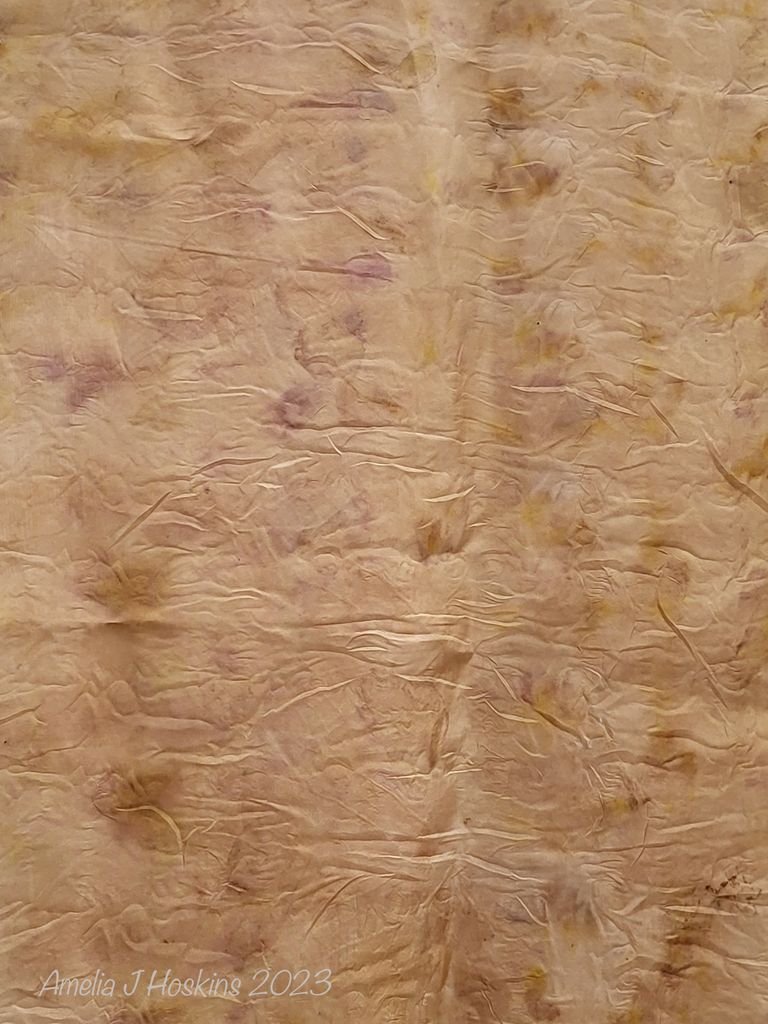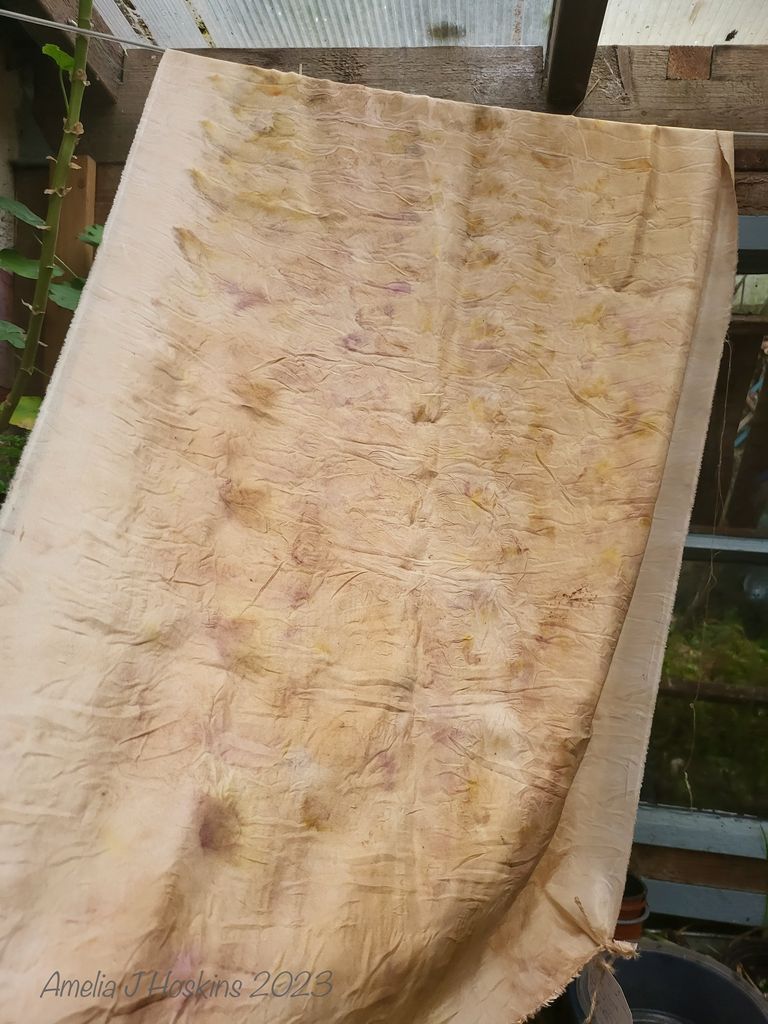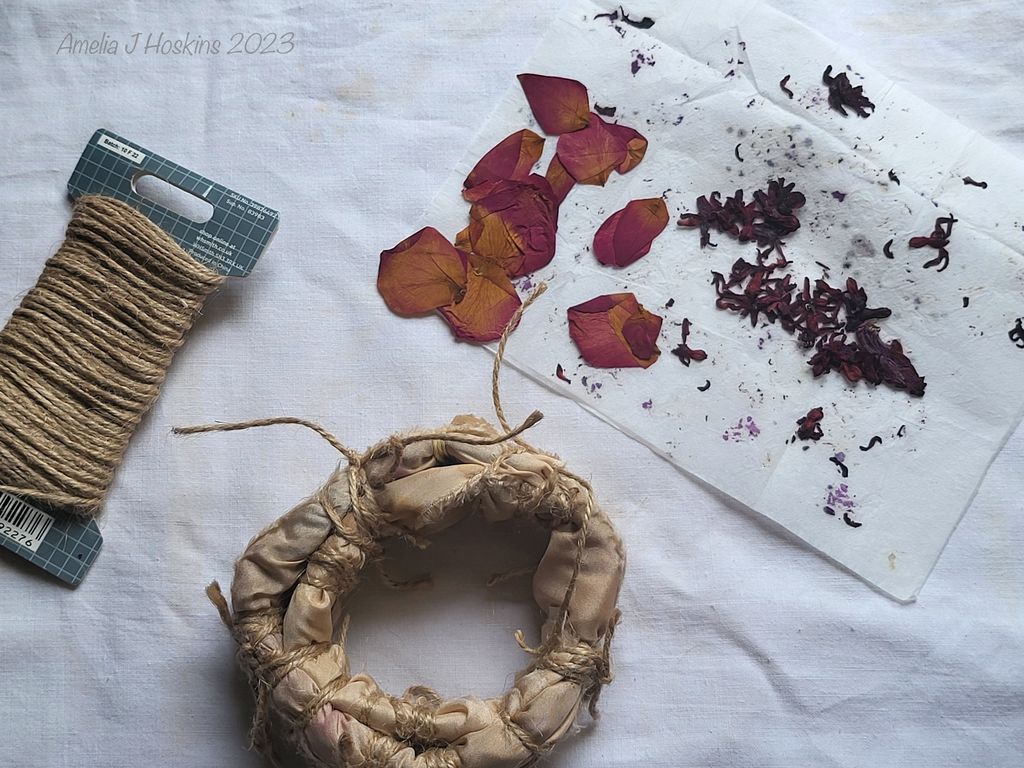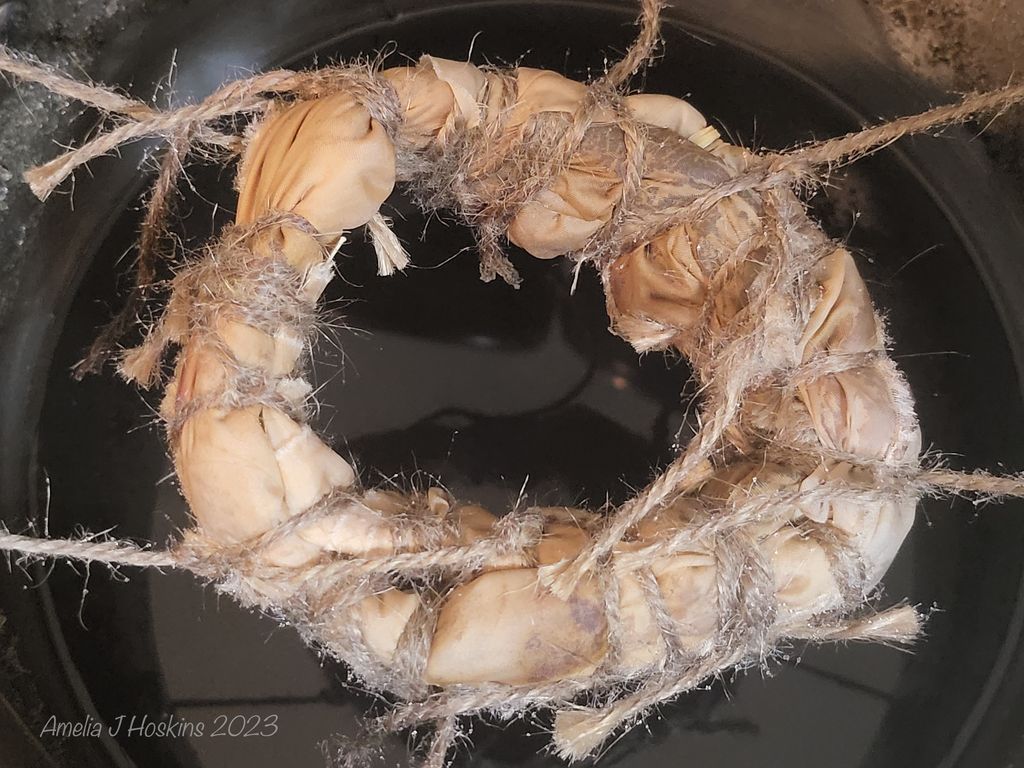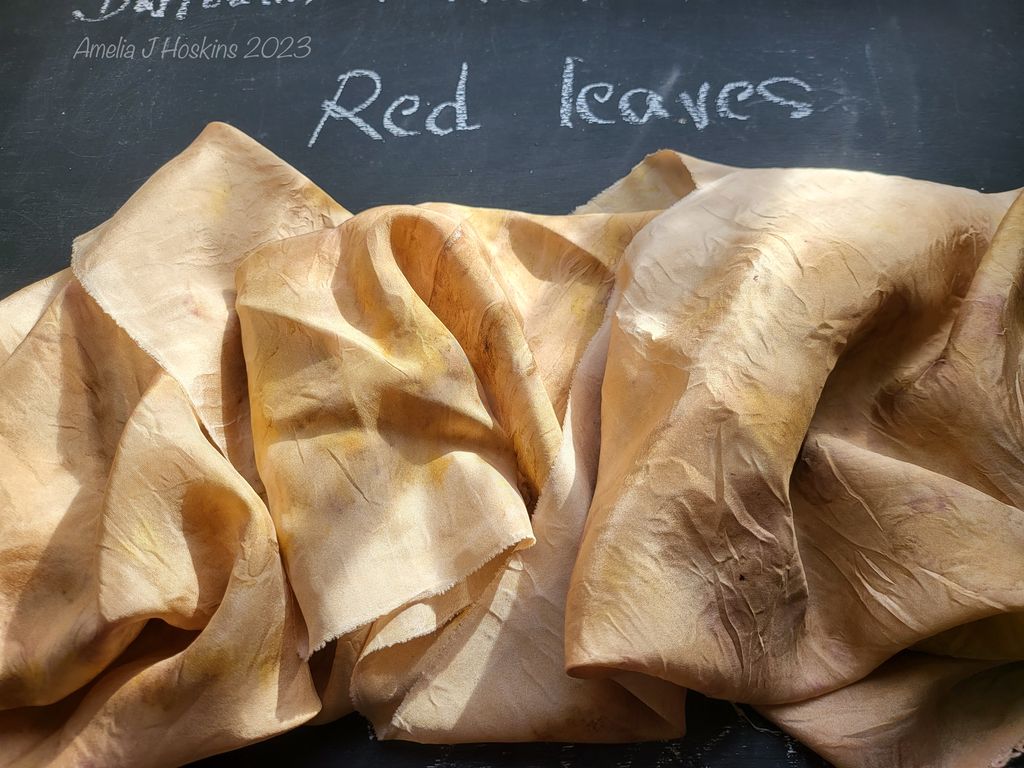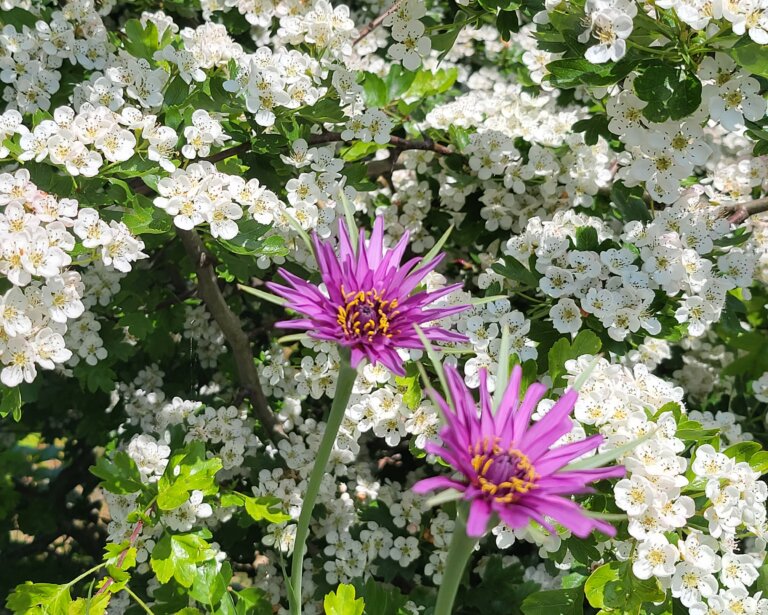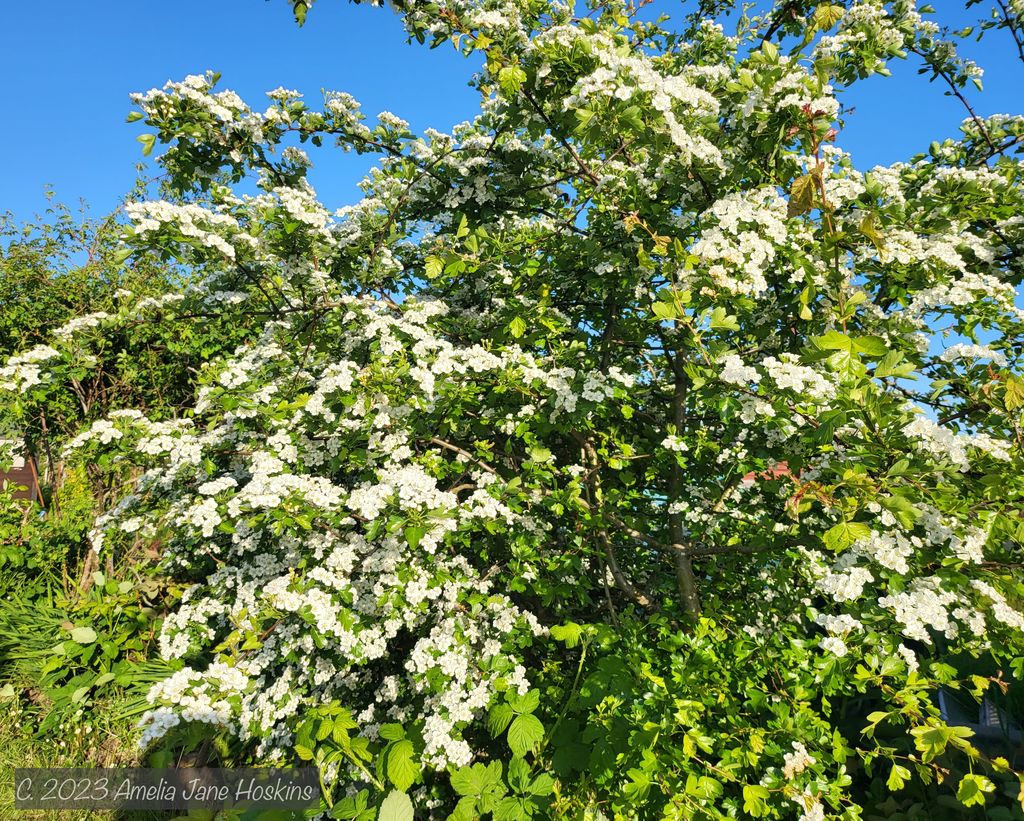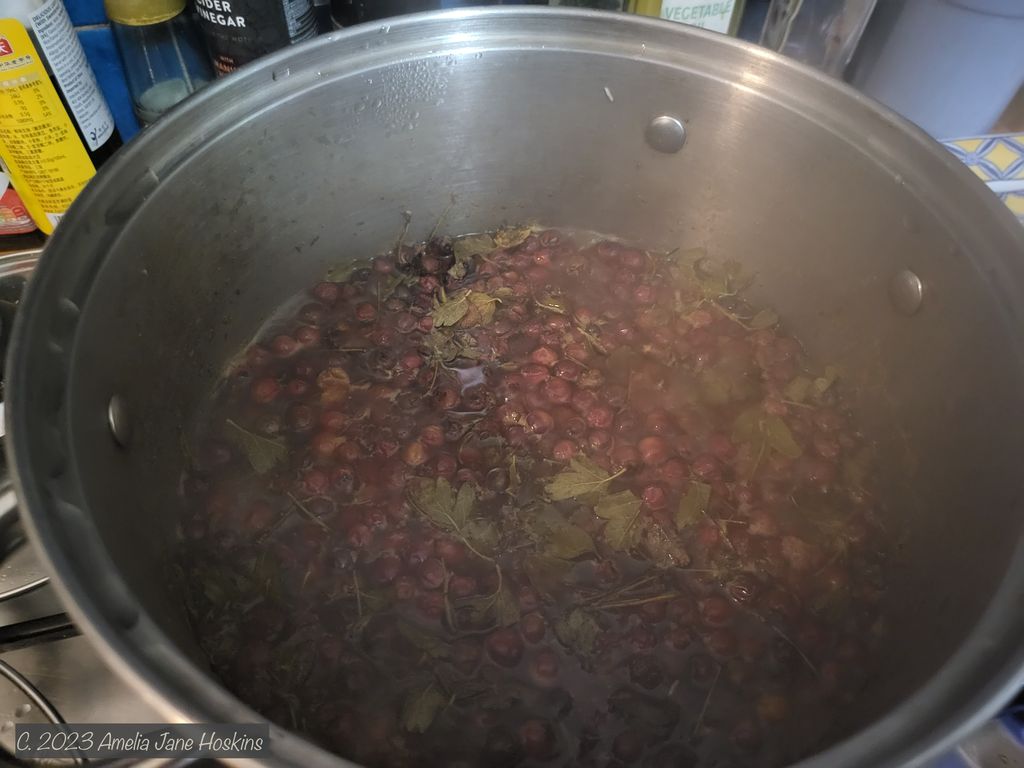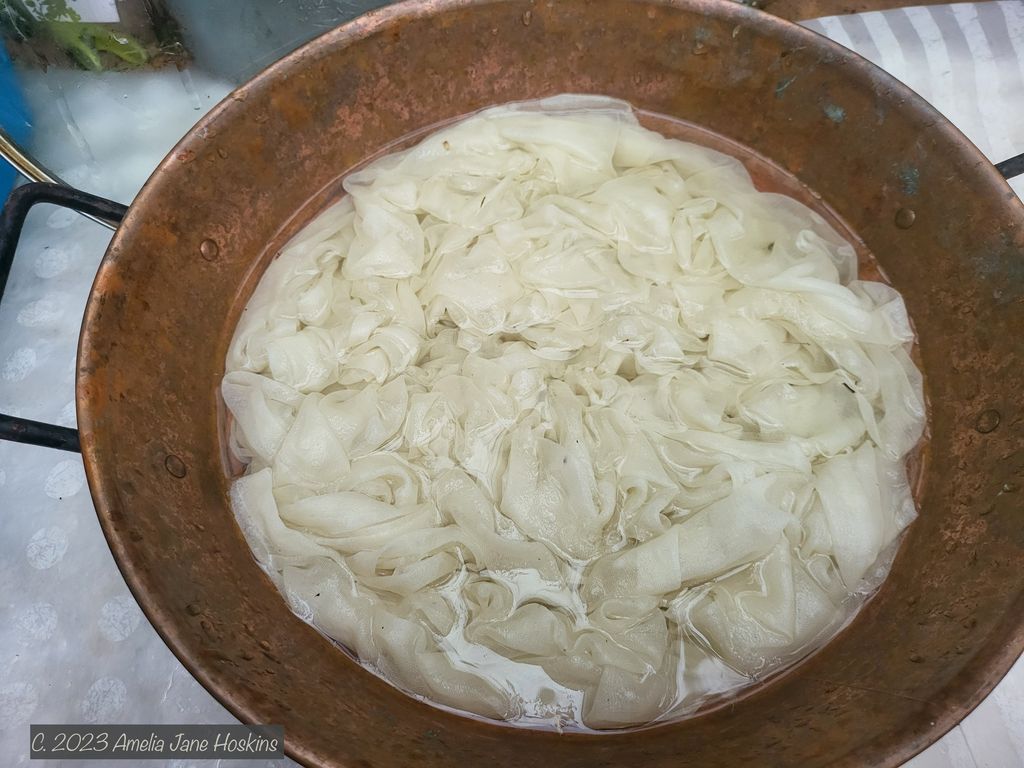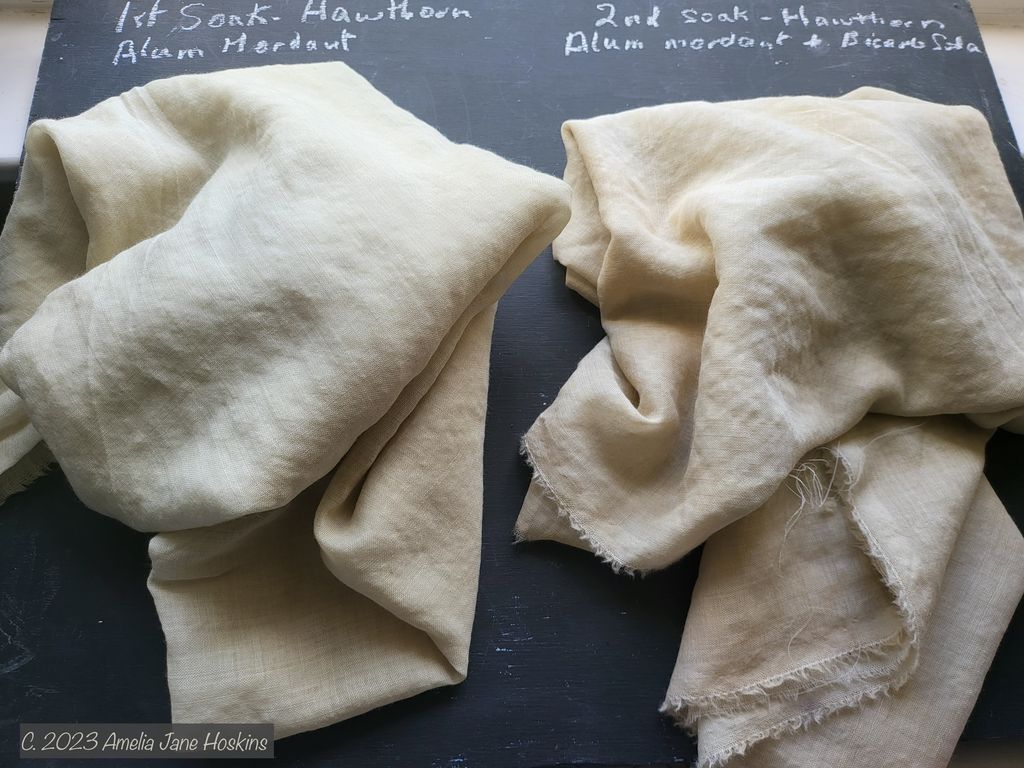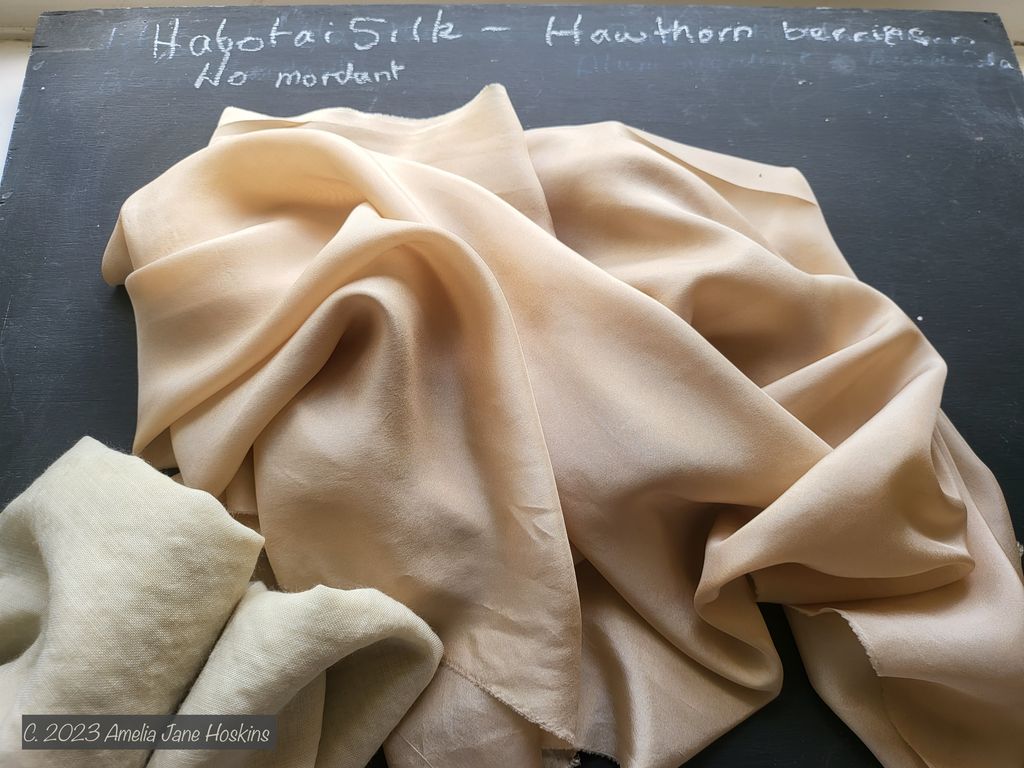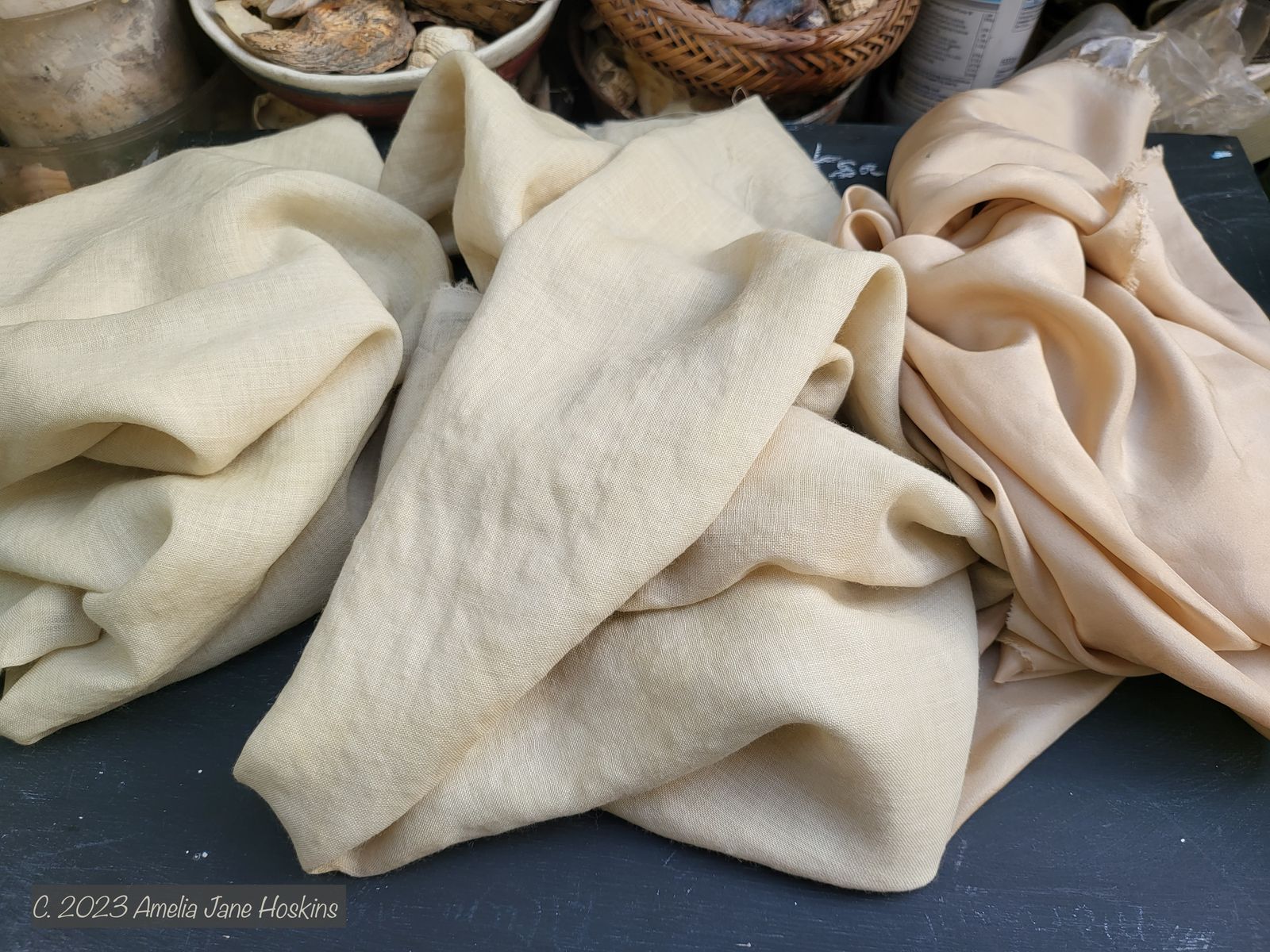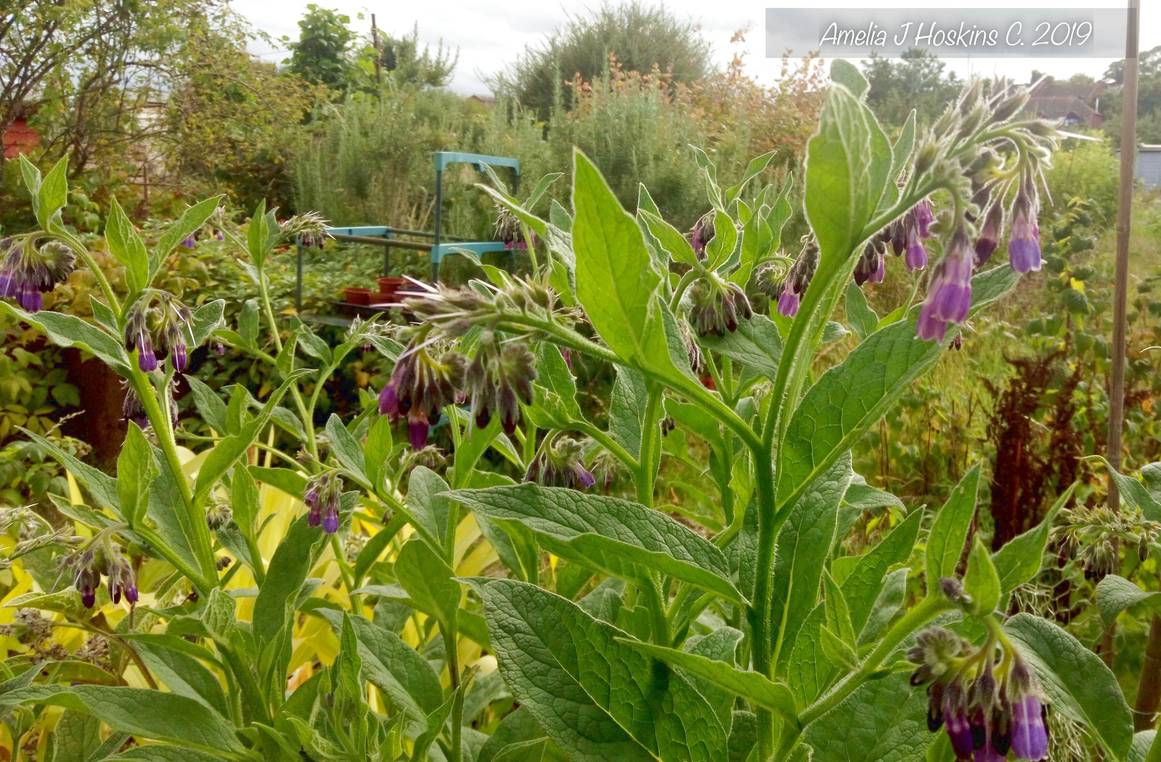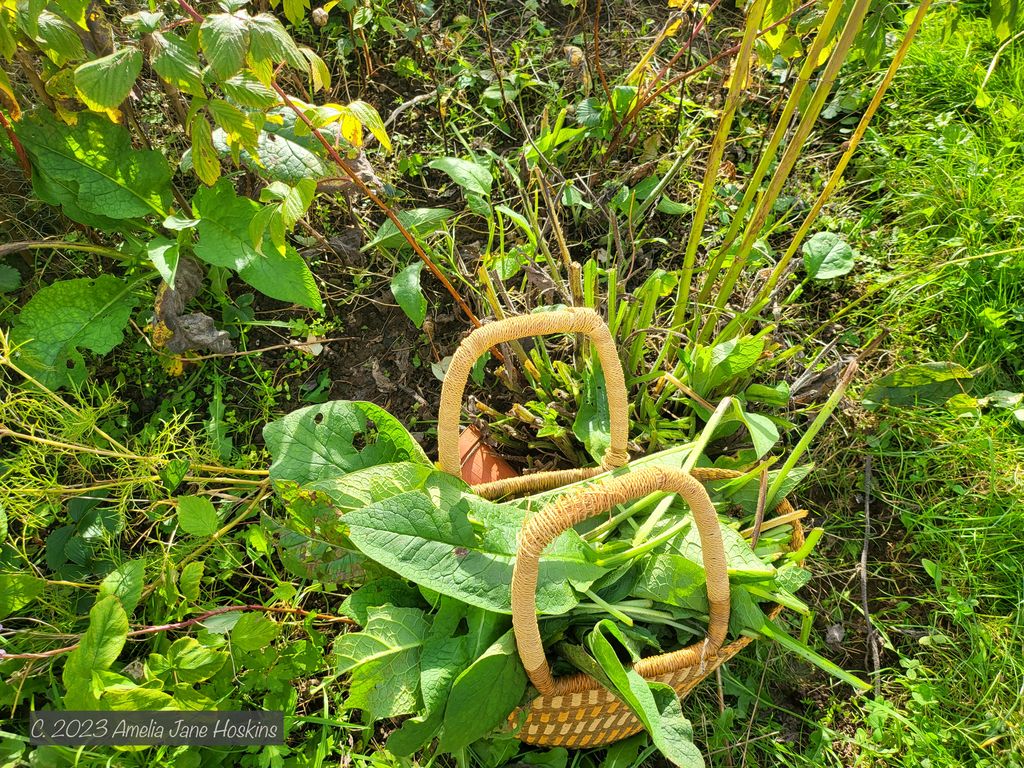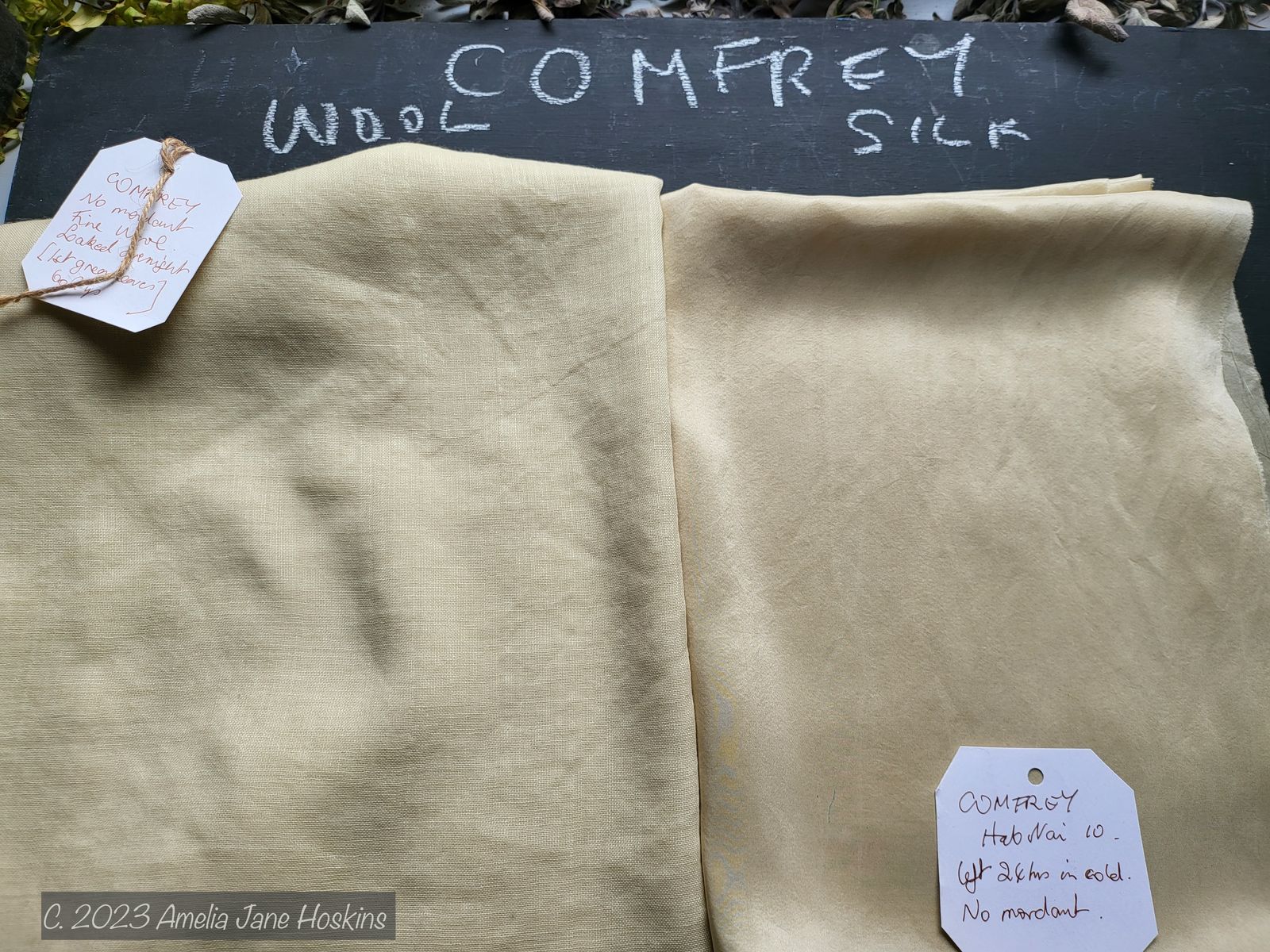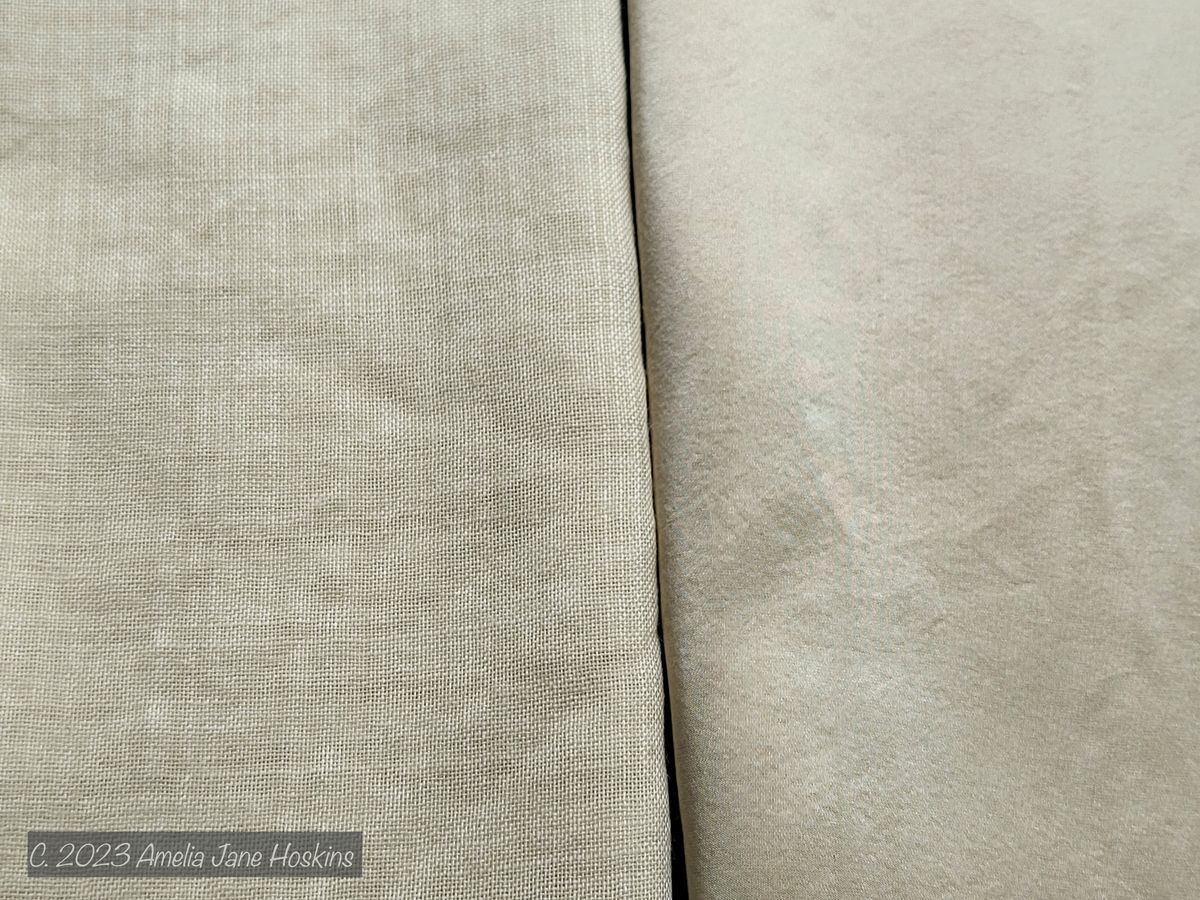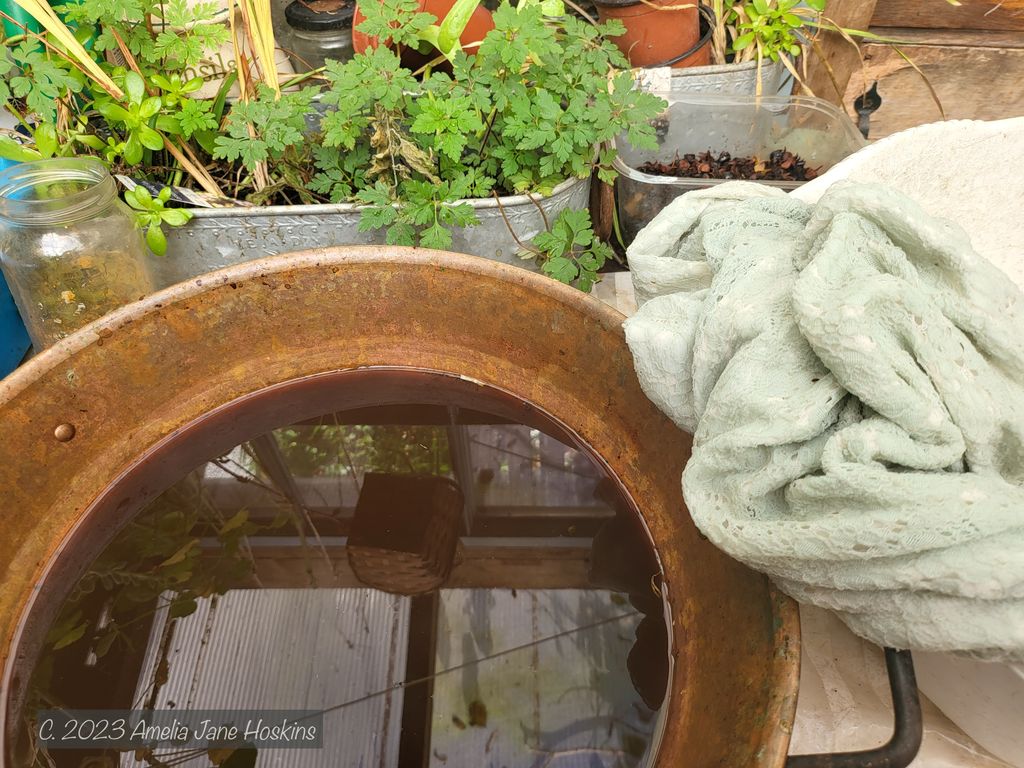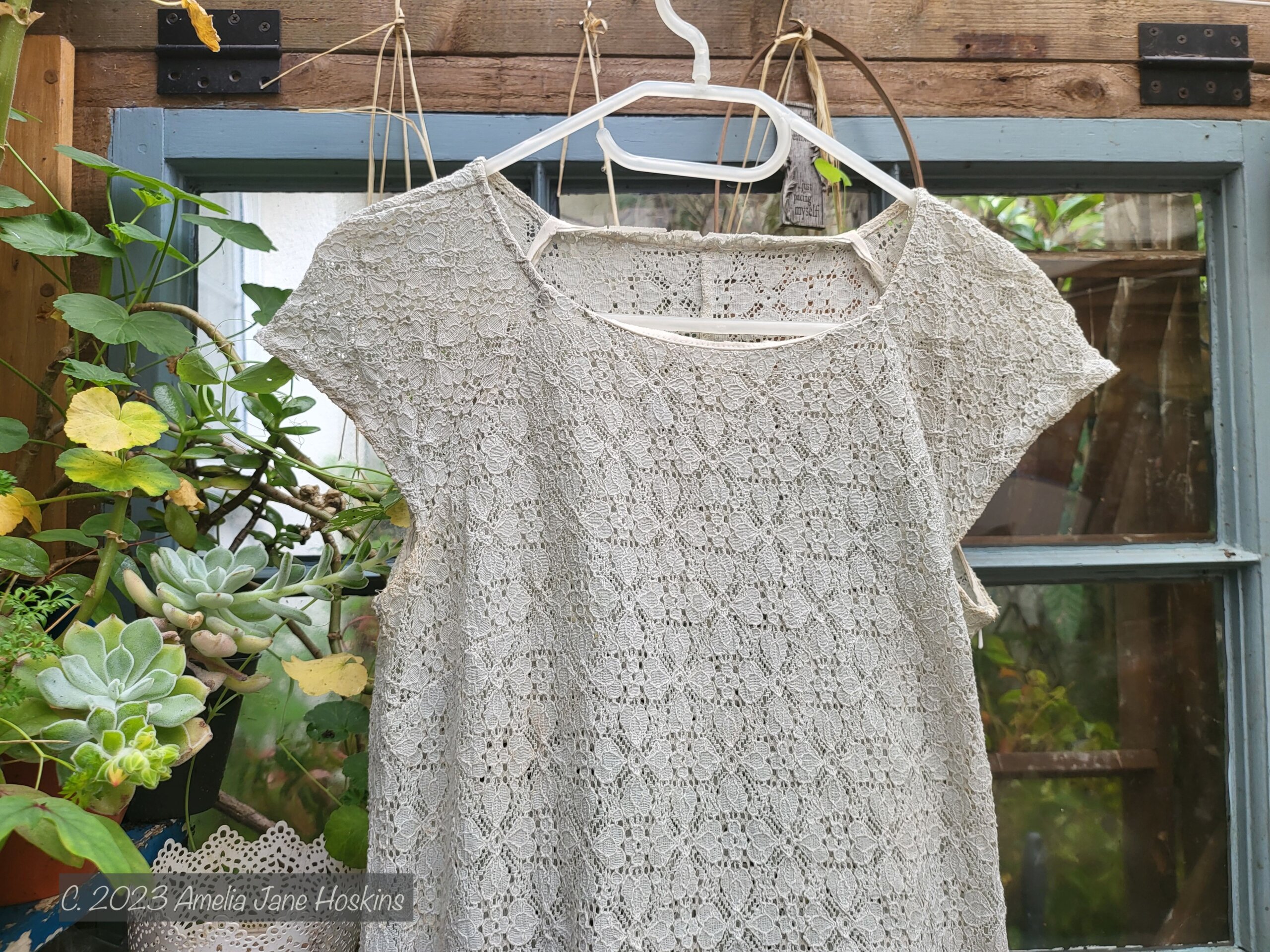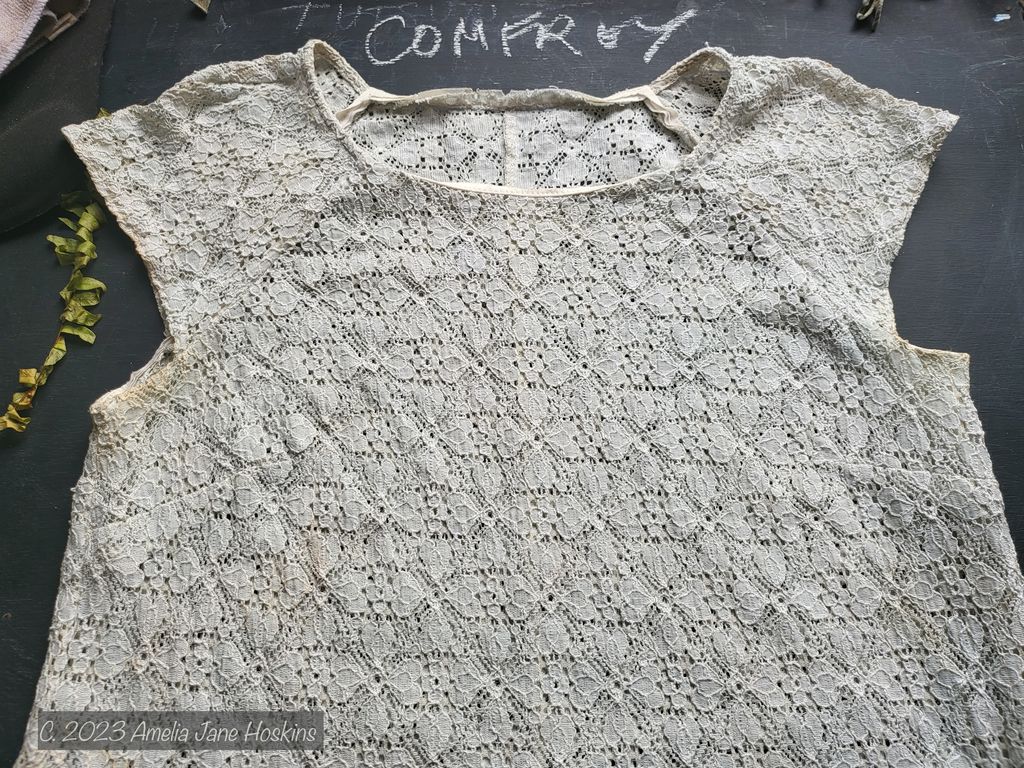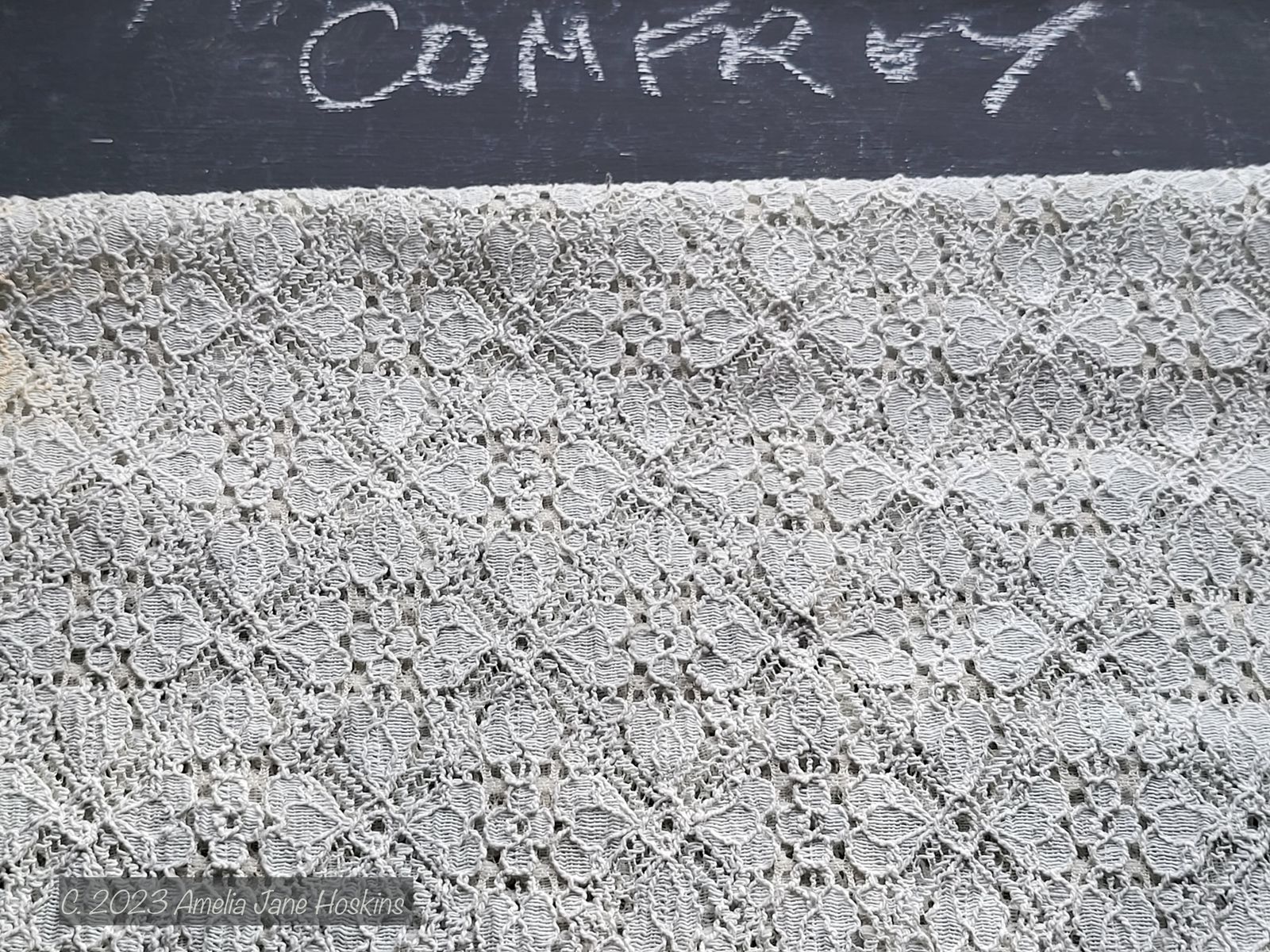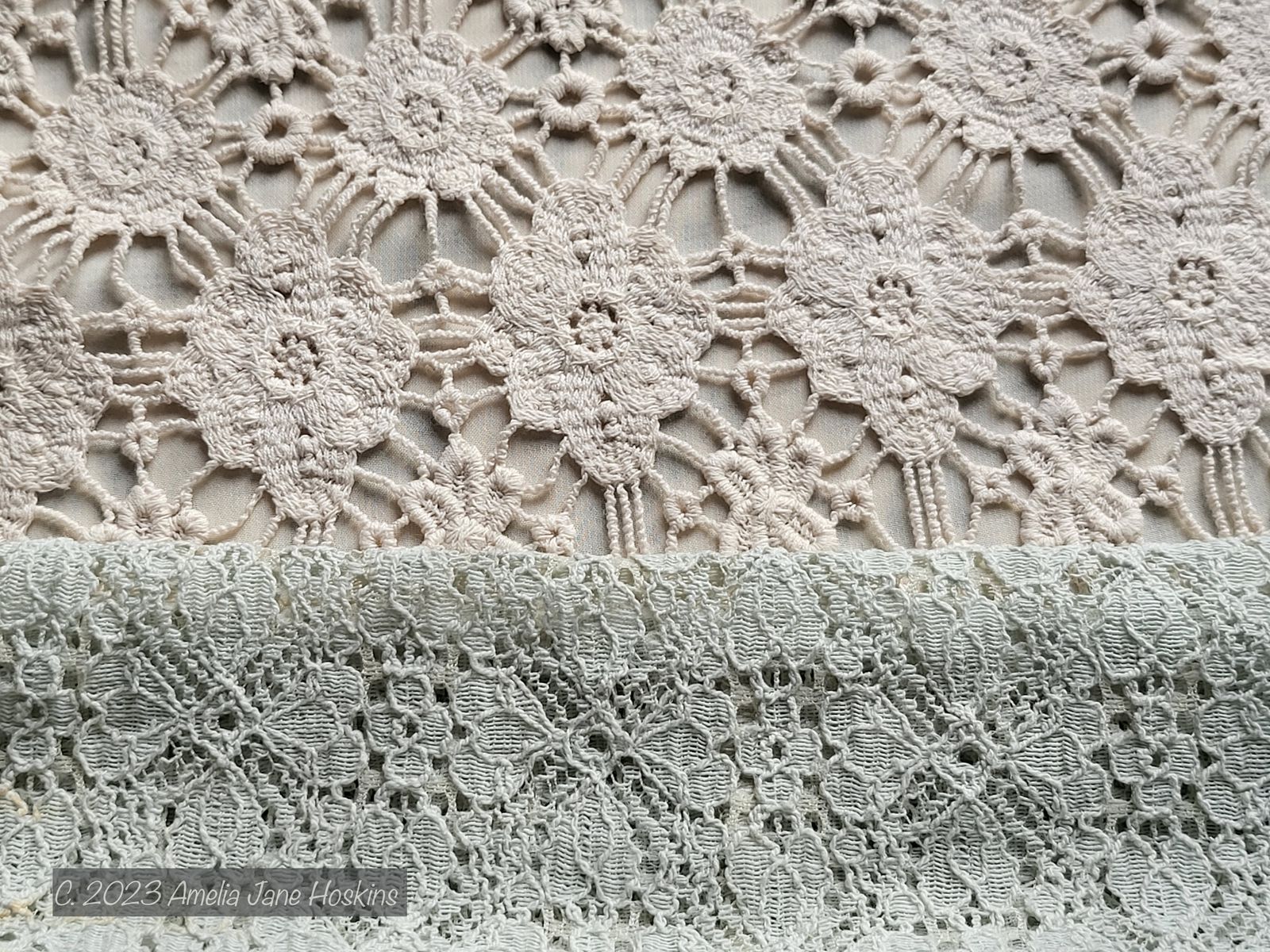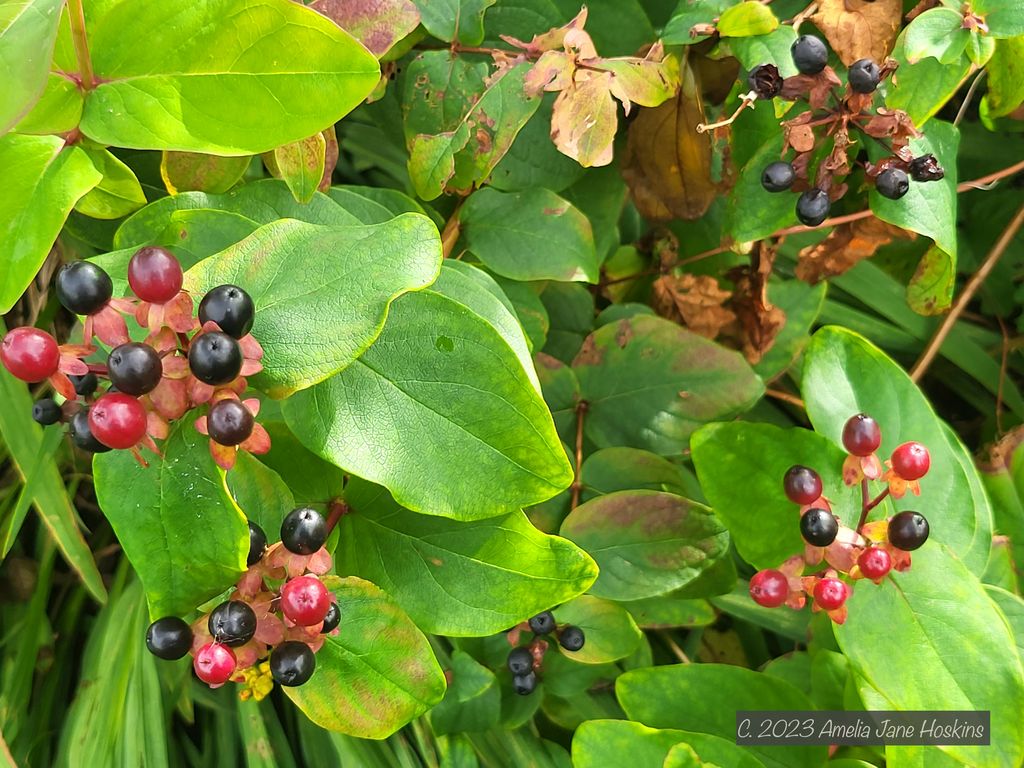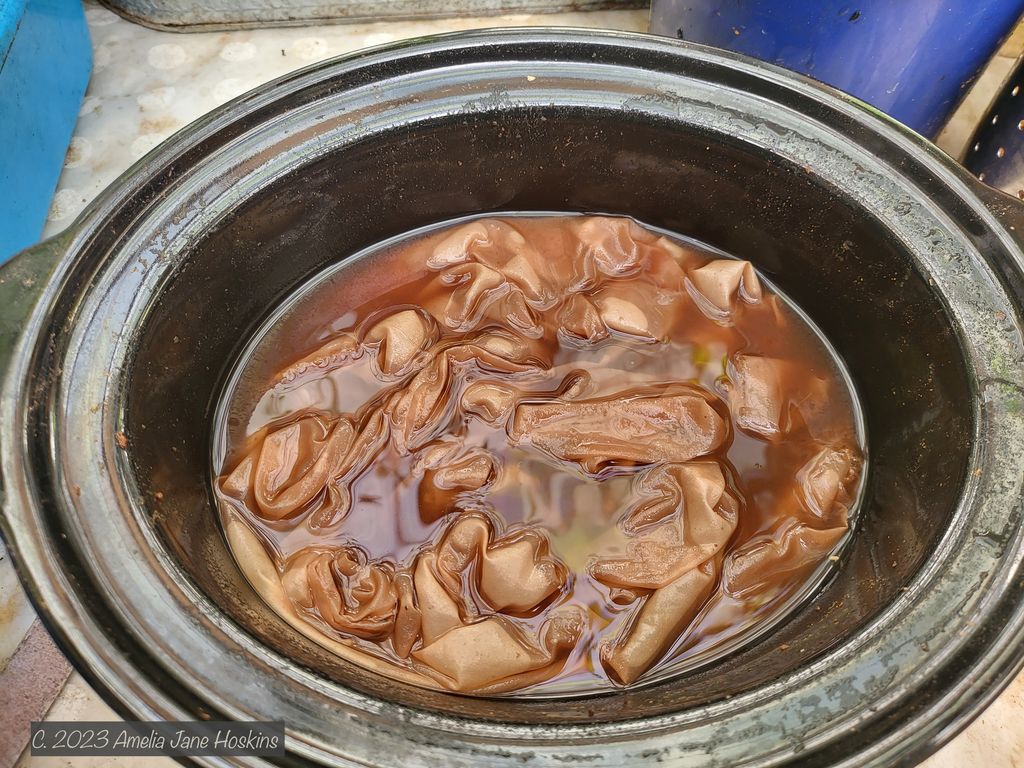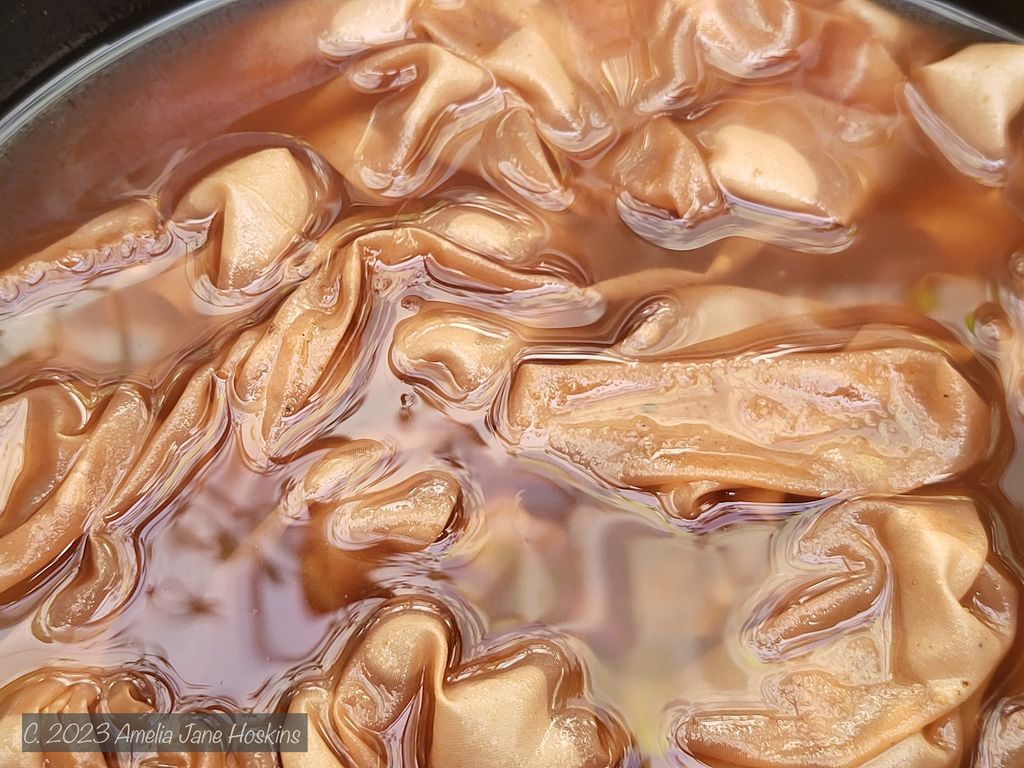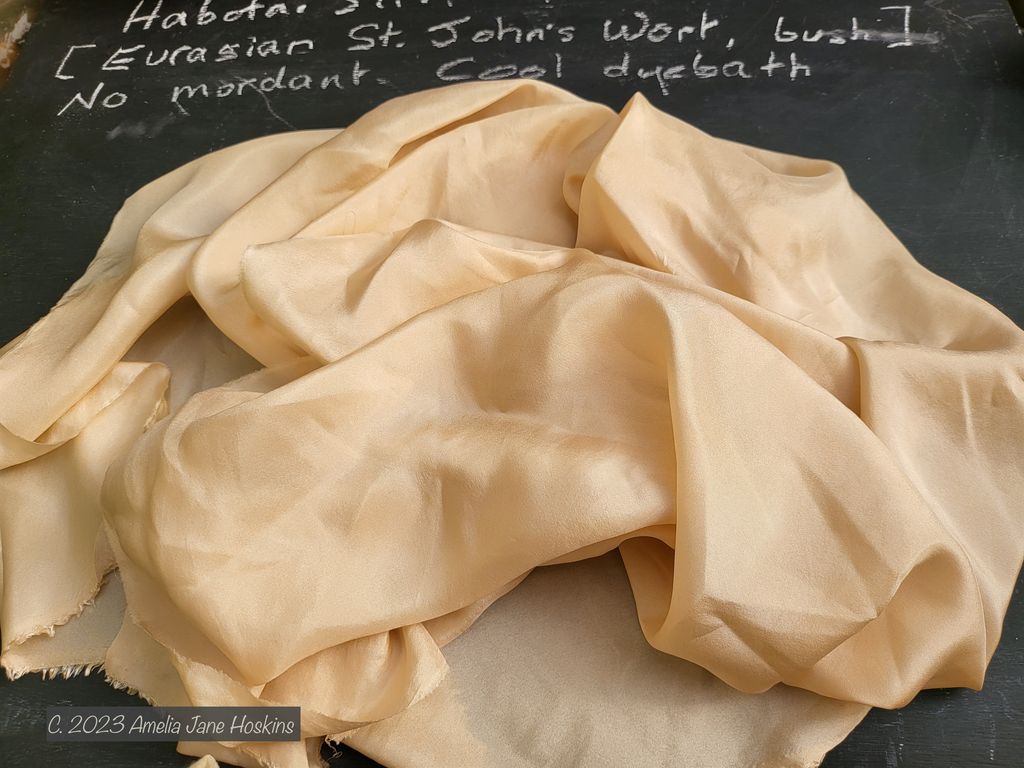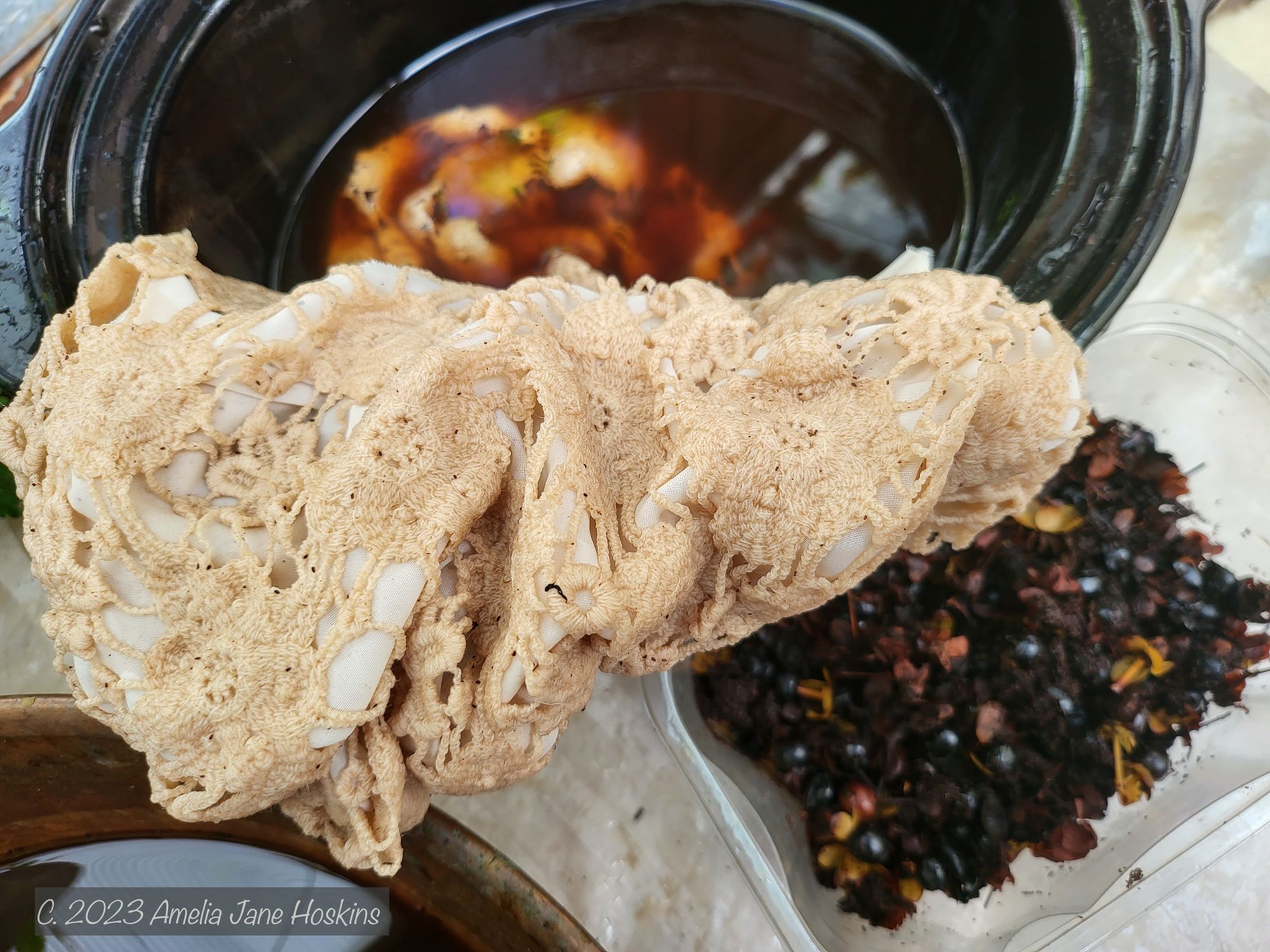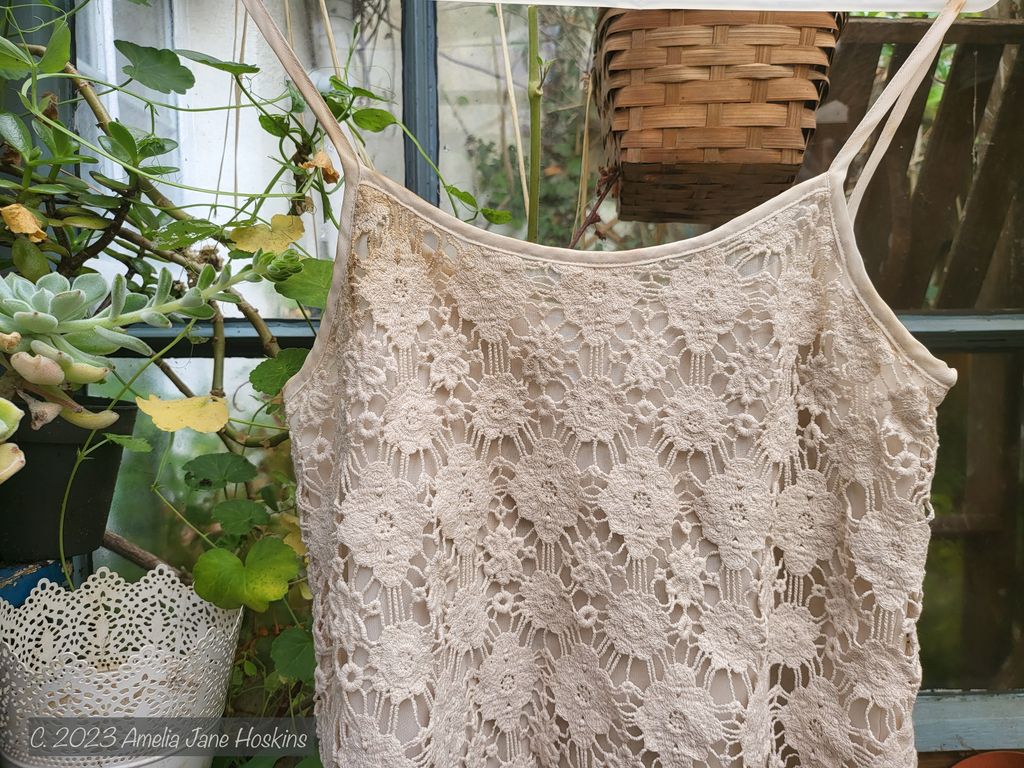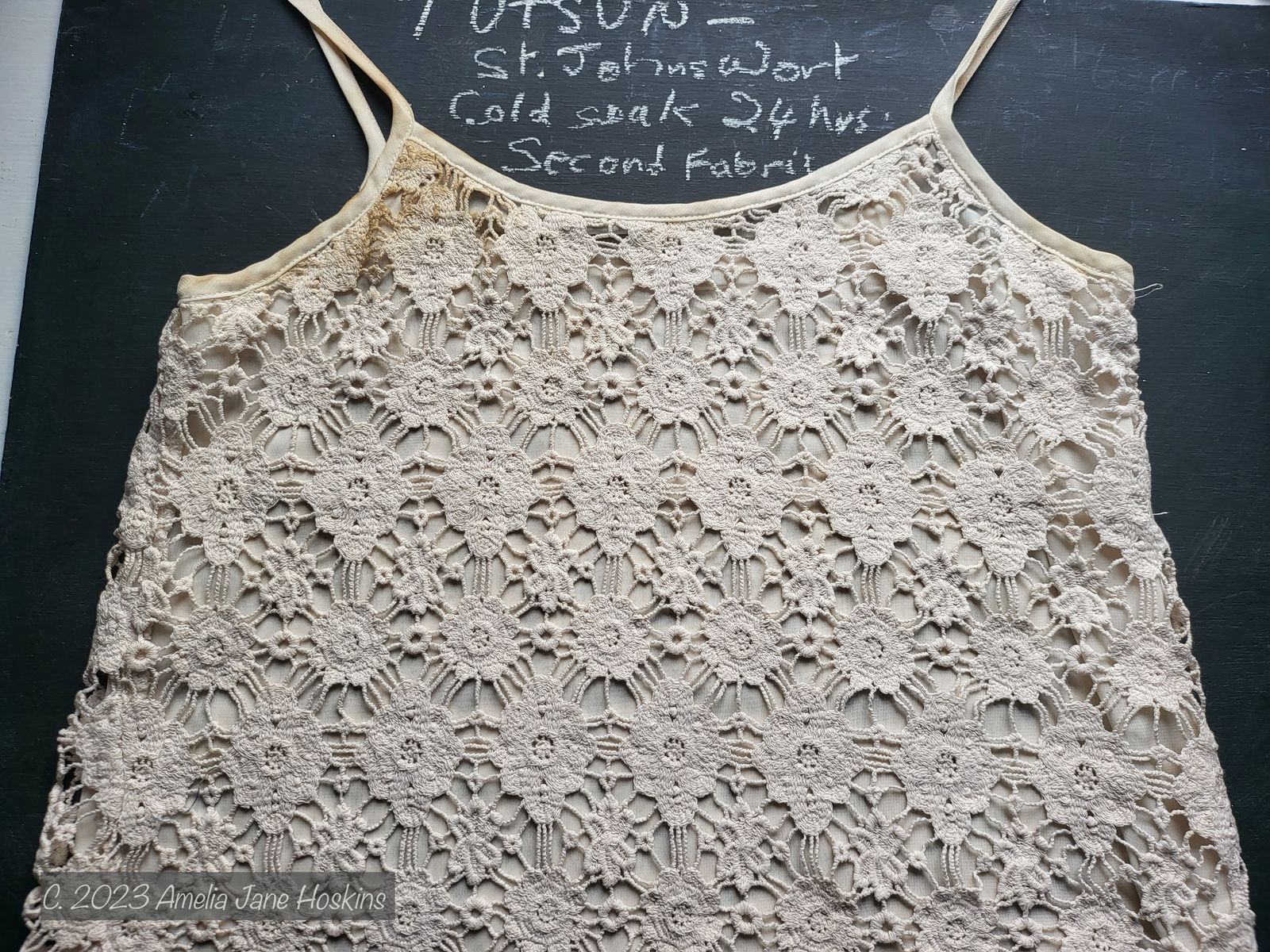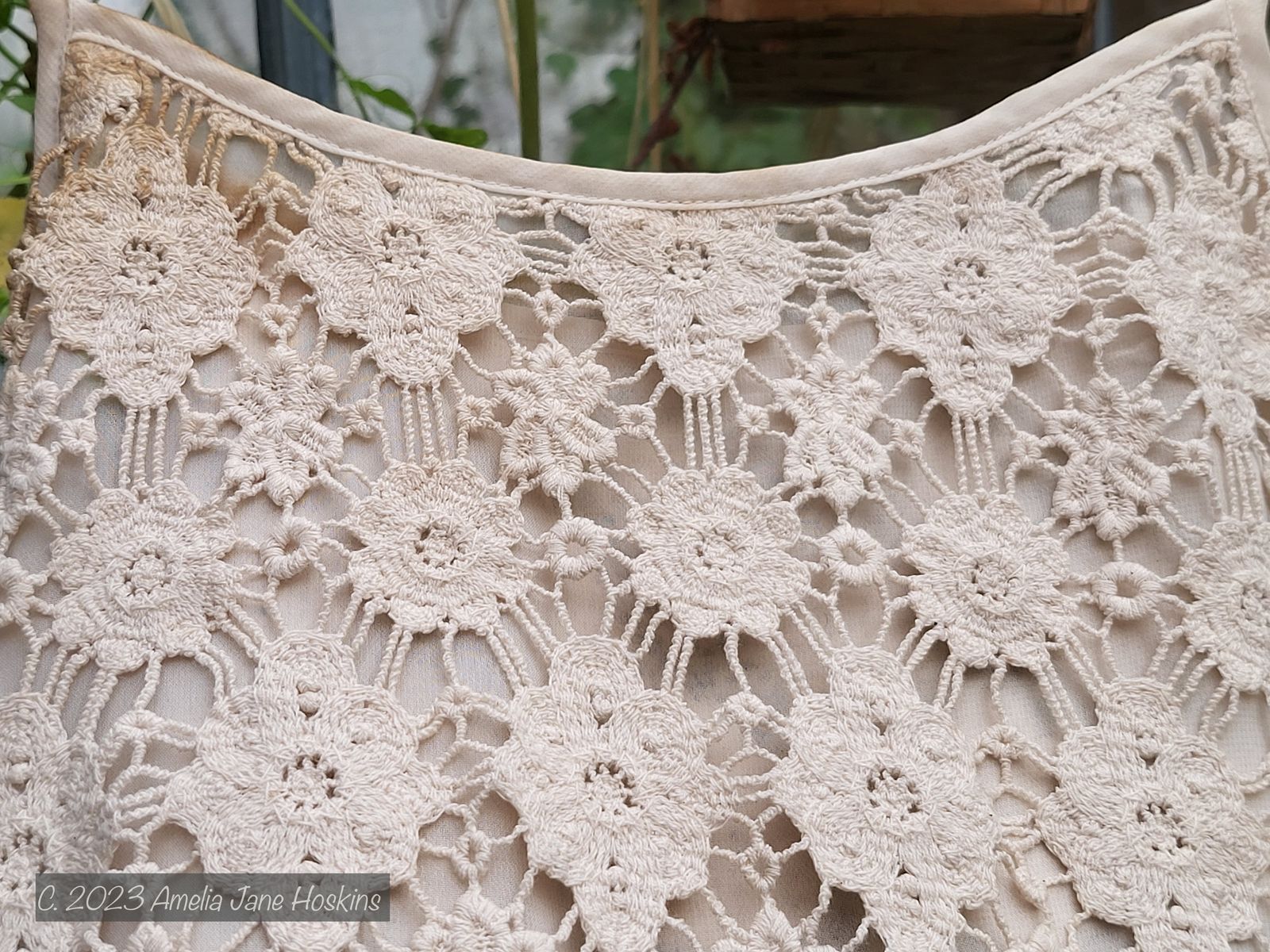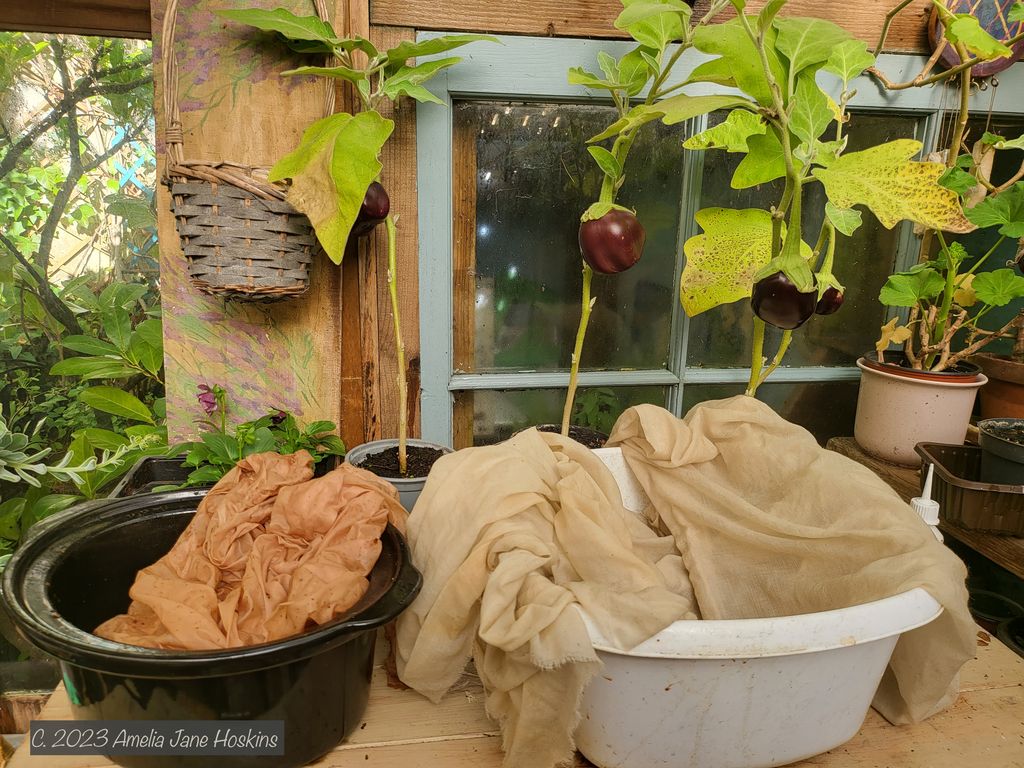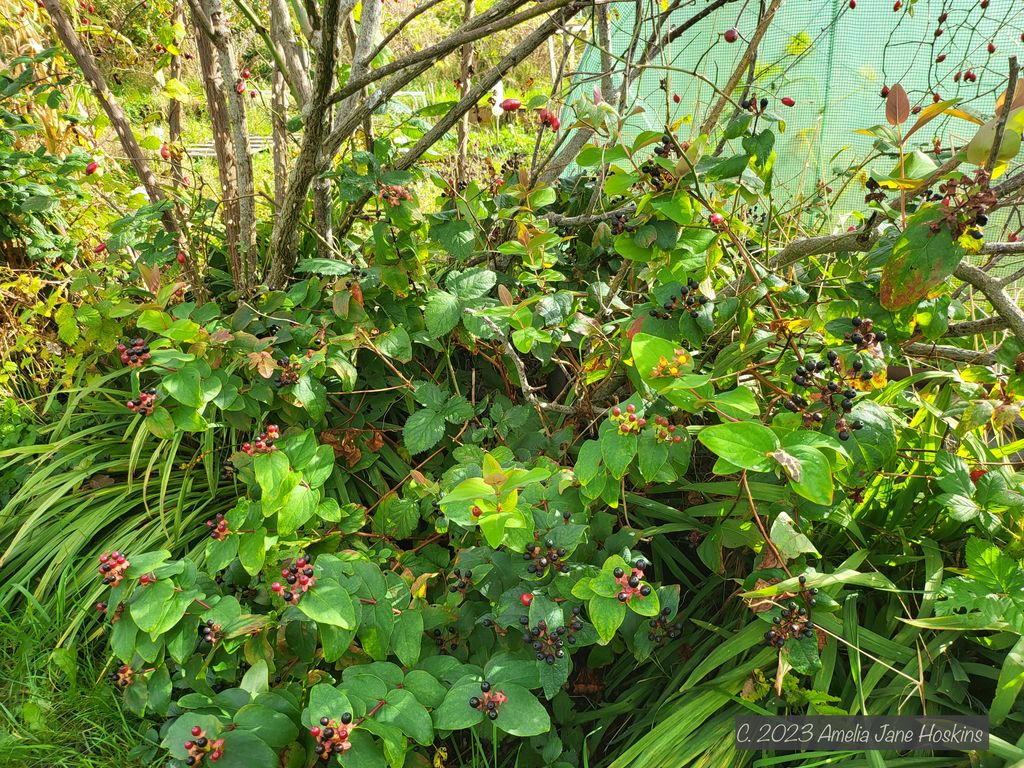Hawthorn 'May blossom' in full bloom with rare magenta Salsify (normally yellow) growing up through.
Autumn FORAGING and DYEING TIME using plants in my allotment
Hawthorn - Comfrey - Tutsan St. John's Wort
Hawthorn berries: the Hawthorn tree has grown considerably since it seeded itself about 5 years ago. The amount of blossom in May ensured there would be many berries, which turned bright red by August, but by late October when I got to pick them many were gone. Previous Hawthorn dyeing was from berries near different rivers. can be compared.
Dye bath is not exhausted after three lots of dyeing, so still has potential for multiple dyeing and to produce a good stock of pale gold silk or wool backgrounds, which is very useful for painting on. It can be modified with iron for duller tones, or sycamore for more russet darker tones. This time of year sycamore leaves are plentiful on the ground.
COMFREY LEAVES collected
Comfrey leaves are plentiful in summer. See previous Comfrey dyeing post. By autumn, three plants had sprouted new leaves after earlier ones had frizzled away from heat and rain. They soon brown off in winter so I picked a deep basket full of them all.
- Soak leaves overnight, pressing as many leaves down into large jam pan as possible.
- Heat to soften and add more as they soften down. (from a large picking).
- Boil and simmer for some hours, until leaves mushy
- Remove leaves; cool liquid before adding wool or silk.
Fine wool cloth was dyed first, soaked overnight, without mordant. Silk was dyed secondarily, soaked from cooled dye bath, and achieved the same ecru colour. Notice the colour results are identical for wool or silk, whereas with Hawthorn berries, the colour results are different between fine wool and silk. RESULTS below after 24 hour soakings
Lace dress wet from comfrey dye bath.
Third fabric to soak pigment.
It looked green, but dried grey; only appearing 'green' in photographs.
TUTSAN berries, (EURASIAN ST JOHNS WORT) Hypericum androsaemum
Used for the first time as I had not seen this plant in books. The berries produce a good light orange gold on silk, without mordanting.
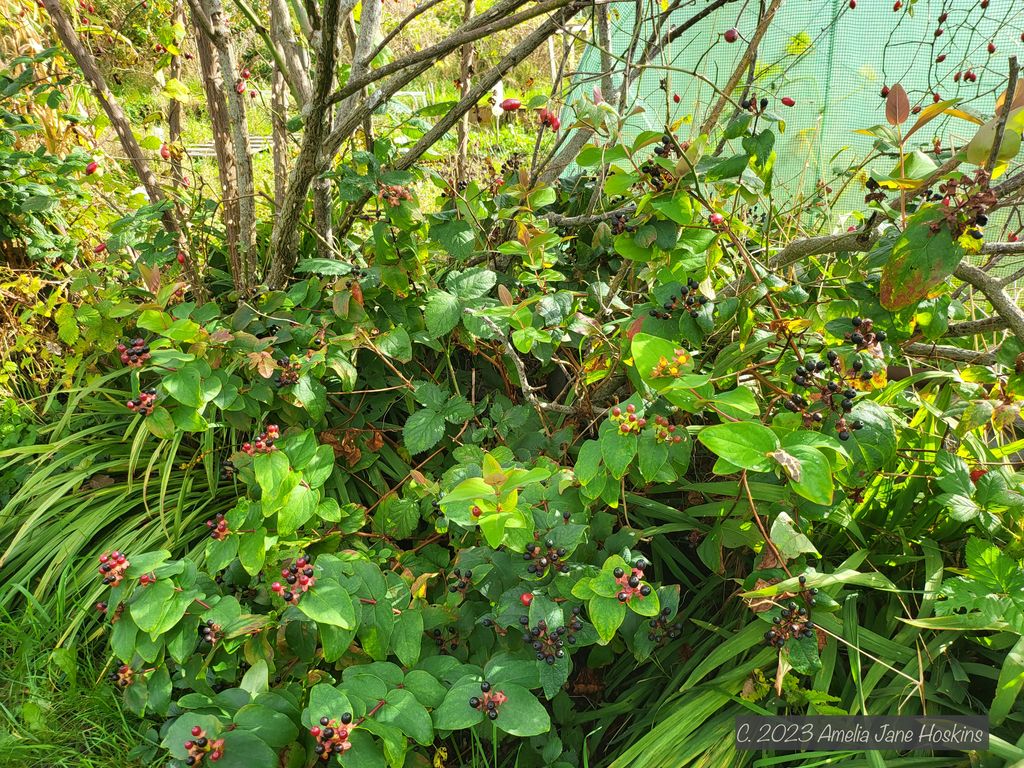
Both black and red berries were soaked overnight, then boiled and simmered, until skins broke and they became soft. Plant stuff removed and Habotai silk soaked in liquid in slow cooker, on warm for a while, then cooled overnight.
Secondary dye piece of lace summer top: Lace appears to be cotton and soaked up the dye. After several hours the lining was still whitish, (photo above wet) so presumed polyester; but after 24 hours, it was just about the same colour as the cotton lace, so it may be viscose or silk organdie. (felt like organdie). More pigment still visible in dye bath to be used for another piece. Used berries in photo.
Comparisons below of wet cloths: Tutsan dyed silk (left), and Hawthorne dyed fine wool (right)
Bundle steaming - petals and leaves - on Tutsan dyed silk
Textured antique background for painting over
- Laying dried geranium petals, dried daffodils, red antirrhinum petals and other purple flowers, and on silk.
- Wrap around 1 inch wide strip of cardboard; roll around; make into bundle ring and tie with twine.
- Suspend bundle over dye bath pan. Steam for an hour.
- RESULT: 'Antique' effect mottled brown and dull pink, with yellow from the daffodils. Motifs repeated in stripes, the width of the cardboard.
- Can be tried with any petals and seeds and leaves on any pastel shade to give textured effect.
